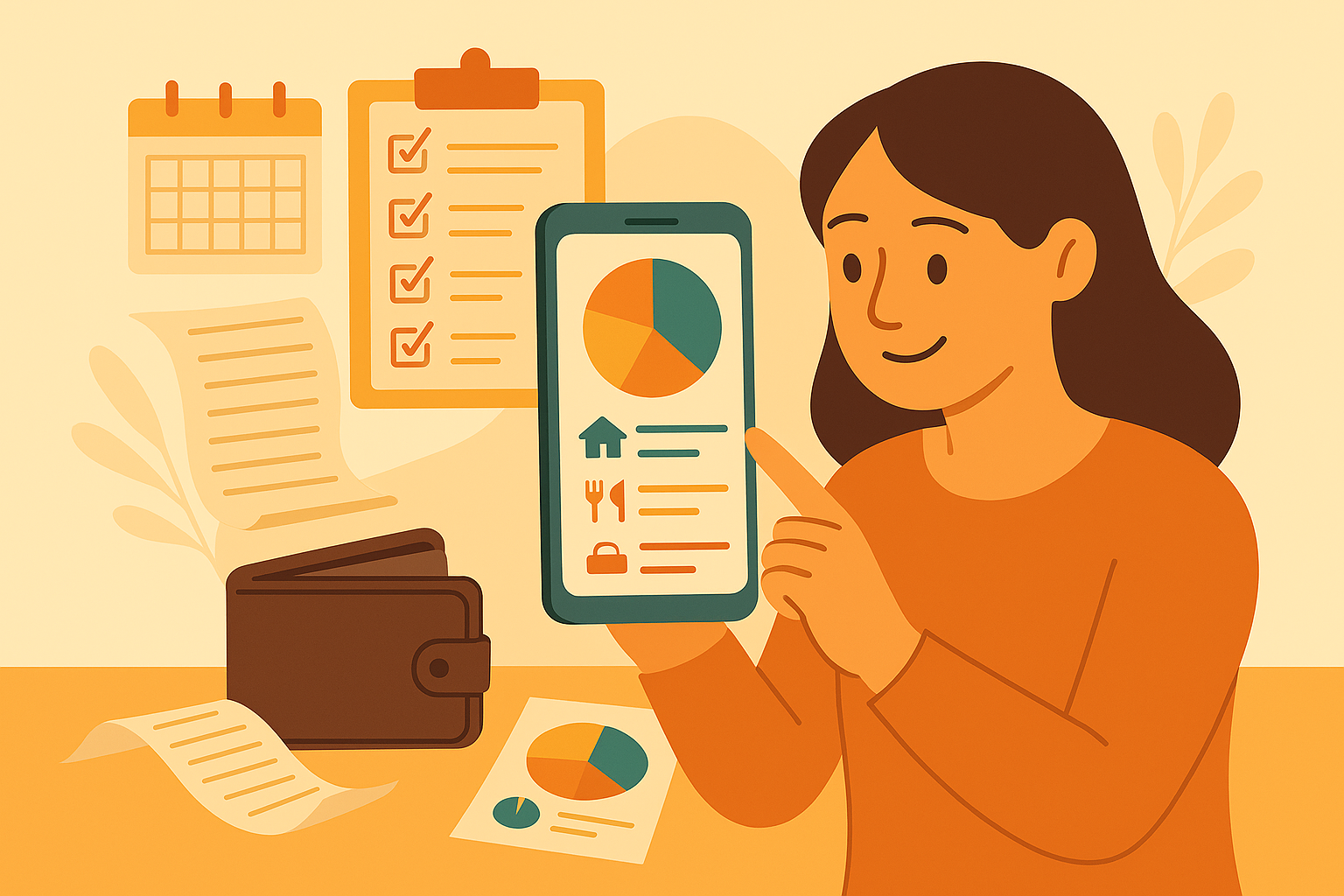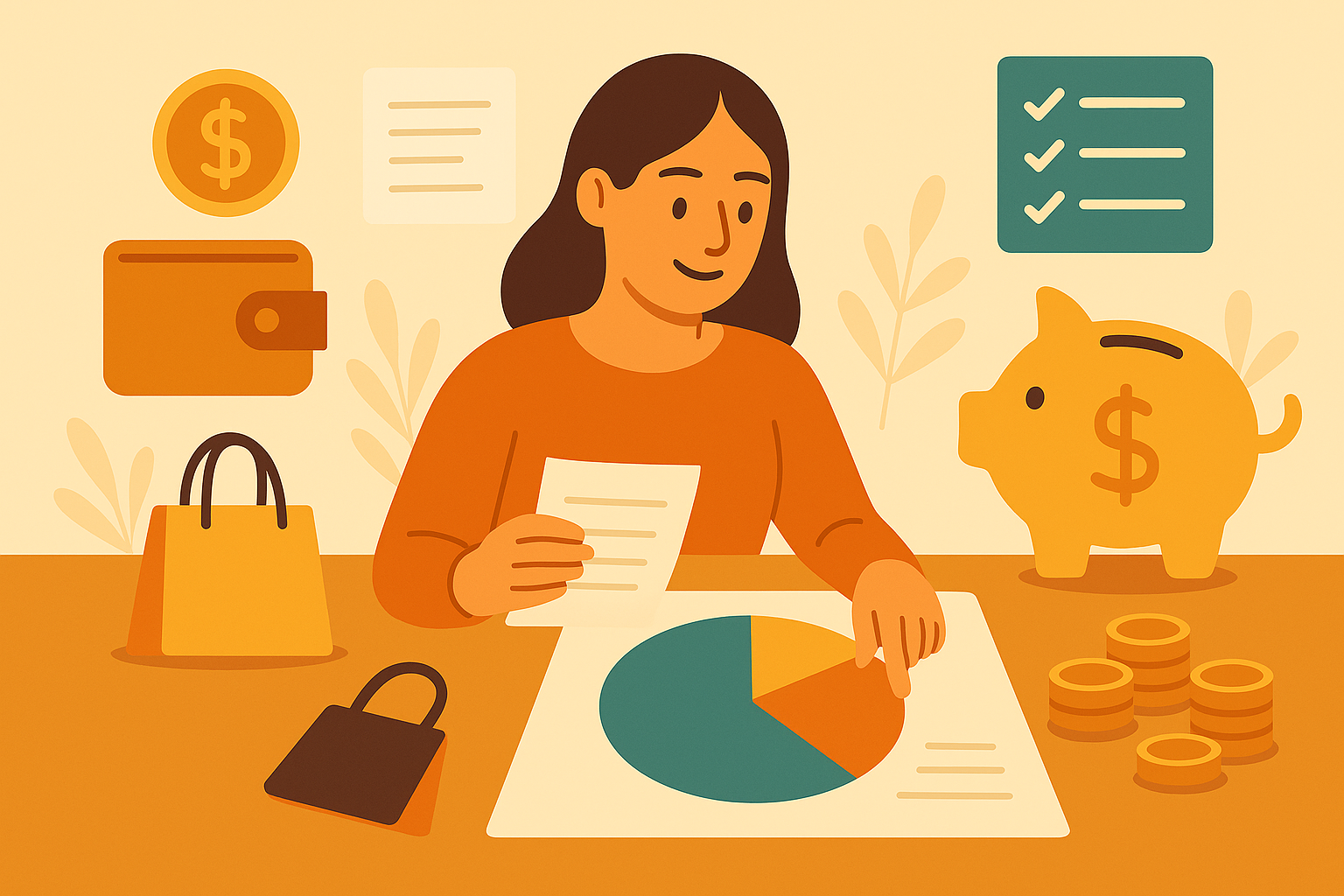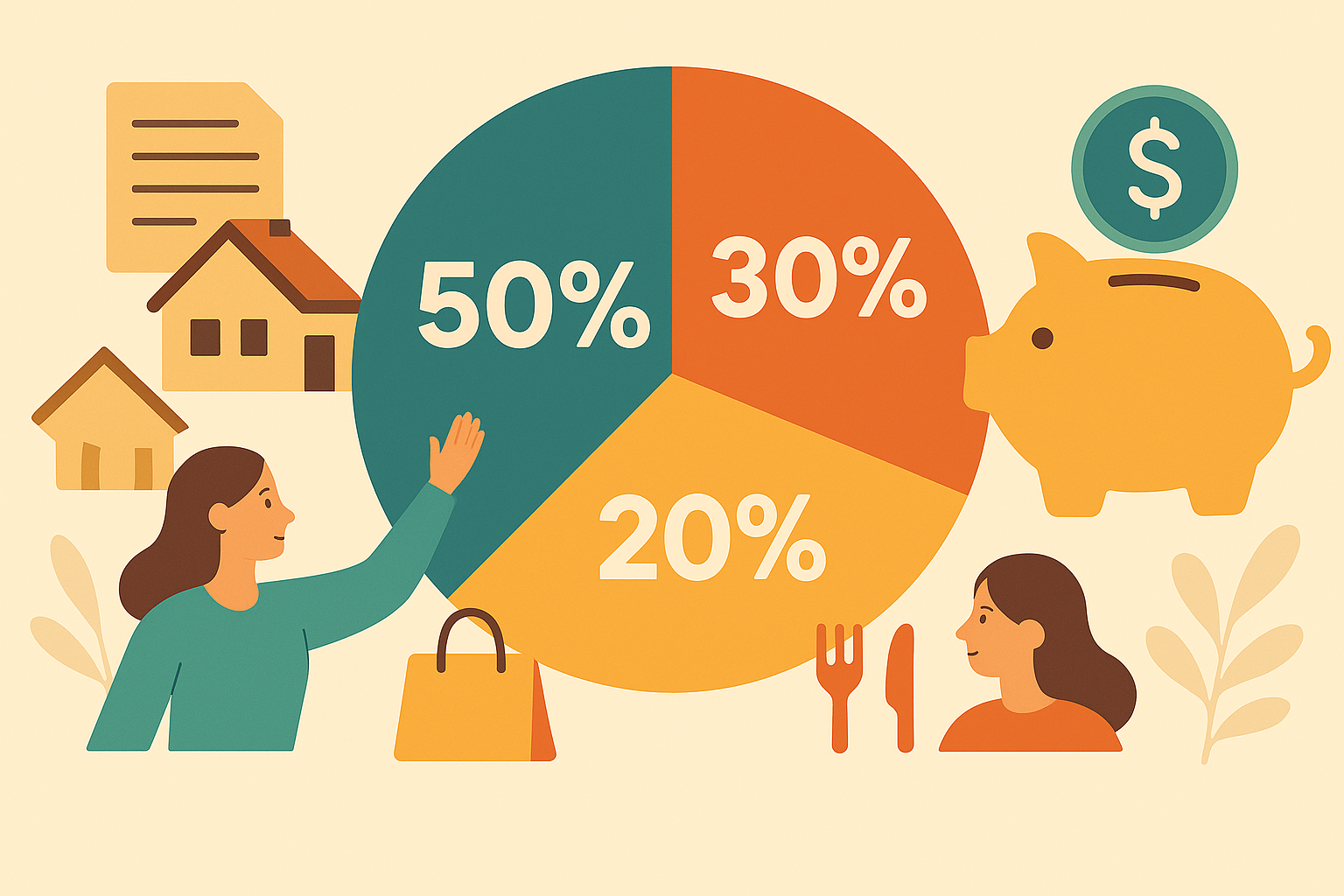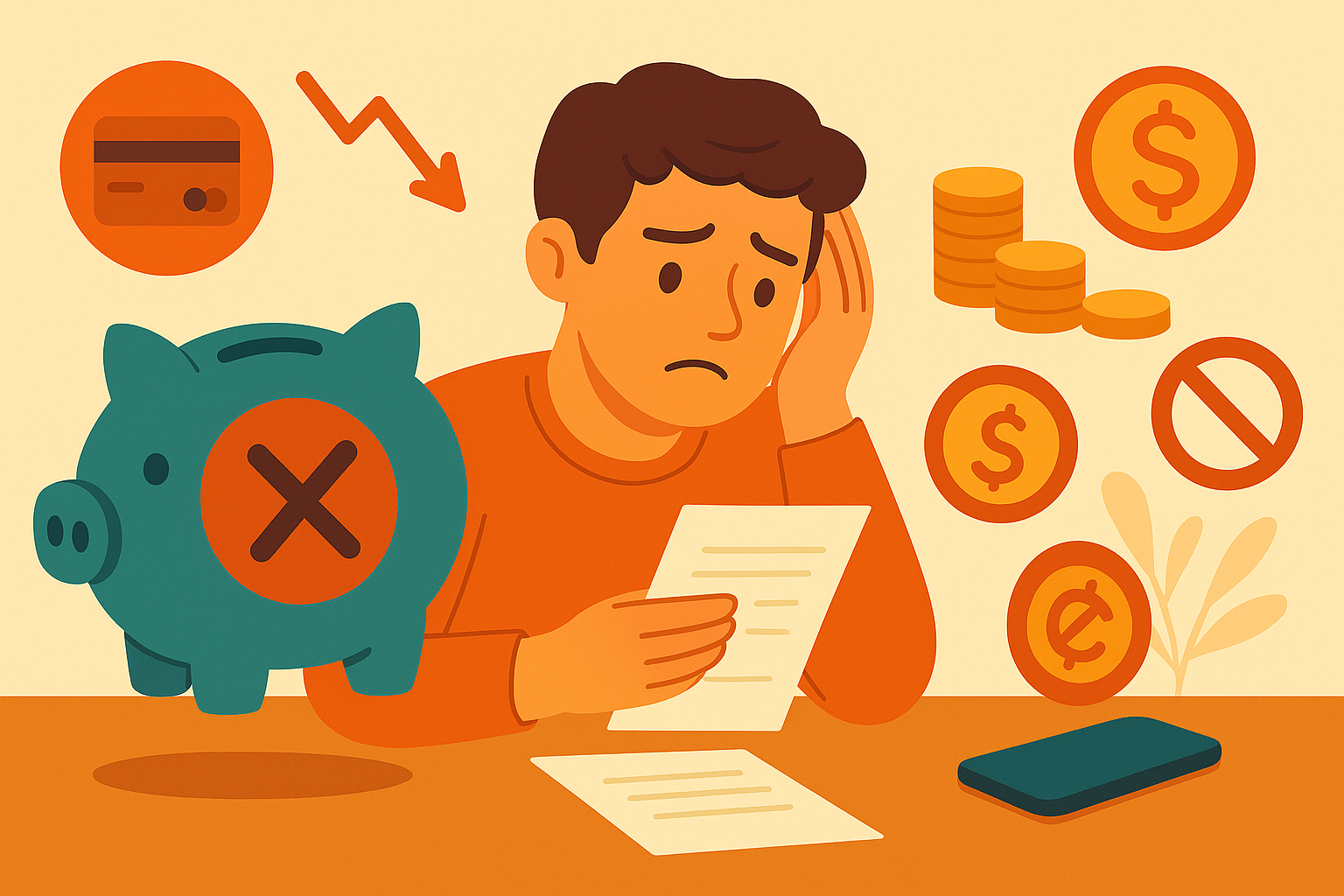Learning how to track spending was the turning point in my financial life. You know that feeling when you check your bank account mid-month and think, “Where did all my money go?”.
Yeah, I’ve been there. More times than I’d like to admit.
Learning how to track spending changed everything for me. It’s the difference between wondering where your money disappeared and actually knowing where every dollar goes.
For years, I’d start each month feeling pretty good about my finances. I had money coming in, bills were getting paid, and I wasn’t living paycheck to paycheck. But somewhere between the first and the fifteenth, money would just… disappear. Not on anything big or obvious. Just gone.
The worst part? I had no idea where it went. Coffee? Sure, maybe. Takeout? Probably too much. But when I tried to figure out exactly where my money was going, I’d draw a complete blank.
That’s when I realized something crucial: you can’t manage what you don’t measure.
Tracking your spending isn’t about restricting yourself or feeling guilty about every purchase. It’s about finally getting a clear picture of your financial reality so you can make decisions that actually align with what matters to you.
And here’s the thing – once you start tracking your spending properly, everything else about managing money becomes exponentially easier.
Let me show you exactly how to do it.
Why Most People Fail at Tracking Their Spending
Before we dive into the how, let’s talk about why so many people start tracking their spending and quit within a week.
The biggest mistake? Making it too complicated.
They approach how to track spending like it’s rocket science when it should be simple. People download apps with 47 different spending categories. They try to log every single penny. They create elaborate spreadsheets that require a PhD to understand. Then they miss a few days, feel overwhelmed, and abandon the whole thing.
The second biggest mistake? Tracking without a purpose.
Writing down that you spent $4.50 at Starbucks doesn’t mean anything by itself. It’s just data. The magic happens when you organize that data into a picture that shows you patterns, reveals problem areas, and helps you understand where your money is actually going versus where you THINK it’s going.
That’s what we’re building here – a simple tracking system that gives you real insights, not just a list of transactions.
The Mind-Blowing Truth About Where Your Money Actually Goes
Here’s what happens when you start tracking your spending properly: you discover that your assumptions about your money are probably wrong.
Most people overestimate their big expenses and drastically underestimate their small recurring ones.
That’s why learning to track spending accurately matters so much – your assumptions are probably wrong.
You might think your biggest spending problem is that $800 car payment. But when you actually track everything, you discover you’re spending $450 a month on food delivery, $200 on subscription services you forgot about, and $175 on “small” purchases that add up.
I’ll never forget the month I finally tracked everything properly. I thought I was spending maybe $100 a month eating out. The actual number? $340. Almost $100 a week. On food I barely remembered eating.
That wasn’t a judgment – it was information. And information is power.
Once you know where your money is really going, you can make intentional decisions about whether that aligns with what you actually want. Maybe you’re fine spending $340 on restaurants because you love trying new food and it brings you joy. Or maybe you’d rather redirect that money toward a vacation fund or paying off debt.
But you can’t make that choice until you know the truth.
How to Track Spending: The Hybrid Method That Actually Works
After trying every tracking method under the sun, I’ve landed on what I call the hybrid approach. It combines the best parts of manual tracking with the convenience of automated tools, without making you feel like tracking spending is a part-time job.
Here’s how it works.
Step 1: Choose How You’ll Track Spending
First, you need to decide how you’re going to capture your spending data. You have three basic options, and honestly, all of them work if you actually use them.
The key to figuring out how to track spending successfully is choosing a method you’ll actually use.
Option one is going fully manual with a notebook or spreadsheet. You write down every purchase as it happens or at the end of each day. This feels old-school, but there’s something powerful about physically writing down “$35 – lunch with coworkers” that makes you more aware of your spending.
Option two is using your bank’s transaction history or a budgeting app that automatically imports your transactions. This is convenient because the tracking happens without you thinking about it. The downside? It’s passive. You’re not engaging with your spending in real-time.
Option three – the hybrid approach I recommend – combines both. Let your bank or app capture all your card transactions automatically, but manually track your cash spending and add notes to transactions that need context.
Here’s why this works: the automated part means you never “forget” to track something, but the manual element keeps you engaged and thinking about your spending patterns.
Pick whatever method you’ll actually use consistently. A simple system you stick with beats a perfect system you abandon.
Step 2: Create Categories That Actually Make Sense for Your Life
This is where most tracking systems fall apart. You don’t need 40 spending categories. You need categories that help you understand YOUR spending patterns and make decisions.
Start with these basic categories that cover most people’s spending:
Housing – Rent or mortgage, utilities, insurance, maintenance. Everything that keeps a roof over your head.
Transportation – Car payment, insurance, gas, maintenance, public transit, rideshares. How you get around.
Food – Here’s where it gets interesting. I split this into two: groceries and eating out. Why? Because they serve different purposes and have different price points. Spending $400 a month on groceries feels very different than spending $400 eating out, even though both are “food.”
Essentials – Medications, toiletries, household supplies, phone bill, internet. The stuff you genuinely need to function.
Debt Payments – Credit cards, student loans, personal loans. Keep this separate so you can see how much of your income is going toward past spending.
Discretionary – Entertainment, hobbies, shopping, subscriptions, coffee runs. Everything that’s optional but makes life enjoyable.
Savings & Investments – Yes, track this too. Paying yourself is a spending category that deserves recognition.
That’s it. Seven categories. You can add more later if you need them, but start simple.
The key is that each category should answer a question you have about your spending. If a category doesn’t help you understand your money better or make a decision, you don’t need it.
Step 3: Track Your Spending for One Full Month
Here’s the rule for your first month of tracking: just observe. Don’t change your behavior. Don’t feel guilty. Don’t start restricting yourself.
Just track.
When you track spending without judgment, you get an accurate picture of your real habits.
The goal is to get an accurate baseline of your normal spending patterns. If you start changing your behavior immediately, you won’t know what your actual habits look like.
Every time you spend money – whether it’s $2 or $200 – log it in your chosen system and assign it to a category. If you’re using the hybrid method, check your bank transactions every few days and add any cash purchases you made.
This part feels tedious at first. I won’t lie to you. For the first week, you’ll probably forget to track things and have to backfill them later. That’s completely normal.
But here’s what happens: after about ten days, tracking becomes automatic. You start thinking about your purchases differently. Before you buy something, you’re already mentally categorizing it.
That awareness alone will probably change your spending a little bit, even though you’re not trying to.
Step 4: Review How You Track Spending Weekly
This is the step that transforms tracking from a chore into a powerful financial tool.
Every week – I do mine on Sunday mornings with coffee – spend 10 minutes looking at what you spent that week. Not to judge yourself, but to notice patterns.
Ask yourself these questions:
- What surprised me about this week’s spending?
- Were there purchases I regret or barely remember?
- Were there purchases that brought me genuine value or happiness?
- Did I spend more or less than I expected in any category?
- Are there patterns emerging? (Like always overspending on weekends or when stressed)
Write down your observations. These insights are gold.
I remember one Sunday reviewing my week and realizing I’d spent $60 on food delivery across three different nights. Not because I was particularly hungry or craving anything specific, but because I was exhausted after work and couldn’t face cooking.
That observation led me to a solution: I started meal prepping easy dinners on Sunday that I could heat up on busy weeknights. Not because spending money on delivery was “bad,” but because I realized it wasn’t actually solving my real problem (being too tired to cook) and was costing me way more than I wanted to spend on something I wasn’t even enjoying that much.
That’s the power of tracking with awareness.
Step 5: Do a Deep Dive at Month’s End
After your first full month of tracking, it’s time to see the big picture.
Add up how much you spent in each category. Calculate what percentage of your income went to each area. Look at your total spending compared to your income.
This moment can be uncomfortable. You might discover you’re spending more than you earn. Or that 40% of your income is going to things that don’t really matter to you.
But here’s the thing: this information isn’t a reason to feel bad. It’s a roadmap showing you exactly where you have opportunities to make changes.
When I did my first month-end review, I discovered I was spending 25% of my take-home income on “discretionary” purchases. Some of that was intentional – hobbies I genuinely loved, experiences that mattered to me. But a lot of it was just… stuff. Random Amazon purchases. Sales I couldn’t resist. Things that seemed like good ideas in the moment but didn’t add much to my life.
That realization wasn’t about beating myself up. It was about recognizing that I had $400+ a month I could redirect toward things that actually mattered to me – like building an emergency fund or saving for a trip I’d been dreaming about.
How This Connects to Everything Else in Your Financial Life
Here’s where tracking spending becomes truly powerful: it’s the foundation that makes every other money decision clearer.
Once you know how to track spending effectively, every other financial decision becomes easier.
When you know exactly where your money goes, budgeting stops being a restrictive diet and starts being a spending plan based on reality. You’re not guessing at numbers anymore – you’re working with actual data about your life.
When you’re trying to save money, you can immediately see where you have flexibility. Maybe you can’t cut your rent, but you can see that you’re spending $85 a month on subscriptions you barely use.
When you’re paying off debt, tracking shows you exactly how much extra you could throw at your loans if you adjusted spending in certain categories.
When you’re thinking about big purchases, you can look at your spending patterns and know whether you can genuinely afford something without derailing other goals.
Everything becomes clearer when you have the full picture.
The Three Types of Spending Patterns You’ll Discover
After tracking your spending for a month or two, you’ll start noticing patterns. Most people’s spending falls into three categories, and recognizing which is which changes everything.
Fixed Expenses are things that stay mostly the same every month. Rent, car payment, insurance, subscription services. These are predictable. You know they’re coming. They’re also the hardest to change quickly, but the most impactful if you can reduce them.
Variable Necessities are things you need but that fluctuate. Groceries, gas, utilities. You have some control here, but you can’t eliminate them. This is where small optimizations can add up – like meal planning to reduce grocery spending or being more intentional about electricity use.
Discretionary Spending is where you have the most flexibility and where most of the “money disappearing” happens. Eating out, entertainment, shopping, hobbies. This isn’t bad spending – it’s what makes life enjoyable. But it’s also where being intentional makes the biggest difference.
The goal isn’t to eliminate discretionary spending. It’s to make sure your discretionary dollars are going toward things that actually add value to your life, not just filling time or soothing stress.
What Changes After You Start Tracking
I need to be honest with you about something: tracking your spending won’t magically fix your finances overnight.
What it will do is give you the clarity and awareness you need to make better decisions consistently over time.
After a few months of tracking, you’ll notice some shifts:
You’ll start thinking before you buy things. Not in an obsessive way, but in an intentional way. You’ll pause and ask yourself if this purchase aligns with what matters to you.
You’ll stop wondering where your money went. You’ll know exactly where it went because you watched it happen. That knowledge alone reduces so much financial stress.
You’ll be able to spot problems early. If you’re creeping toward overspending in a category, you’ll notice it week two of the month instead of being shocked when your account is empty week four.
You’ll make better trade-offs. When you want to spend money on something, you’ll know exactly where that money needs to come from. Maybe you spend less on eating out this month so you can afford concert tickets. That’s not restriction – that’s choosing what matters more to you.
You’ll build trust with yourself. When you say you’re going to save money or cut back on something, you’ll actually do it because you can see the results. That confidence compounds over time.
The Bottom Line
Here’s what I wish someone had told me years ago when I was confused about where my money kept disappearing to:
You don’t need to be perfect with money. You don’t need to cut out everything you enjoy. You don’t need to live on rice and beans or never have fun.
You just need to know where your money is actually going so you can decide if that’s where you want it to go.
Tracking your spending gives you that knowledge. It transforms your finances from this vague, stressful mystery into something concrete that you can actually work with.
It’s not about restriction. It’s about clarity.
It’s not about judgment. It’s about awareness.
It’s not about perfection. It’s about progress.
Start tracking today. Just for one week. See what you discover about your spending patterns. Notice what surprises you.
I promise you, the insights you gain will be worth the 10 minutes a day it takes to track your purchases.
Because you can’t change what you can’t see. And you can’t build the financial life you want until you understand the financial life you’re currently living.
Your money is trying to tell you something. Start listening.







